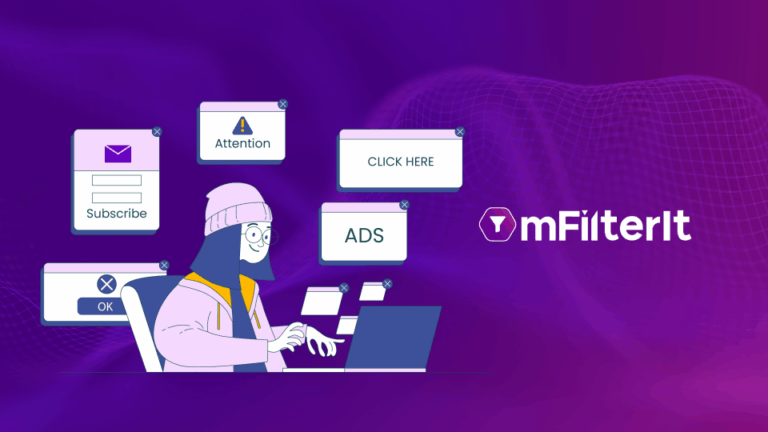If you’re running an affiliate program, chances are you have seen both sides of the story. On good days, affiliates bring in new customers, drive sign-ups, and help you scale faster than you imagined. But on bad days, you notice ad spends rising, driving minimal value, organic traffic dipping, or complaints from customers who clicked on an “official offer” that never came from you.
This is the reality for many performance marketers and affiliate program managers today. Affiliate marketing may be one of the most powerful growth channels for industries like ecommerce, fintech, and travel, etc. But it is also one of the most unpredictable if left unmonitored.
A single fraud affiliate can misuse your brand name, bid on your own keywords, or send traffic from unsafe domains, leaving you with inflated costs, lost revenue, and damaged brand credibility.
That is why the industry focus has now shifted to not just running affiliate campaigns but also monitoring affiliate performance closely.
Regulatory bodies like the Advertising Standards Council of India (ASCI) have been tightening disclosure norms and ad monitoring guidelines, signaling that brands are supposed to take complete accountability for how affiliates promote them.
Therefore, monitoring your affiliate ecosystem isn’t just a best practice anymore, it’s becoming the standard for sustainable growth.
So, here’s the big question: How do you keep affiliates in check without slowing down the performance they bring?
In this blog, we’ll walk through what a structured affiliate monitoring audit framework looks like and how brands can implement it to protect their budgets, brand reputation, and long-term growth.
Here’s What an Affiliate Monitoring Audit Checklist Looks Like
Affiliates often exploit loopholes to earn quick payouts using various affiliate fraud techniques like brand bidding, misuse of promo codes, duplicate listings, etc. To avoid this, we have curated an extensive affiliate monitoring audit checklist to help you evaluate your affiliate partner’s performance and take proactive decisions.
Check out here:
1. Are affiliates using your brand assets and claiming to be your “official partner” without approval?
Your brand name is your most valuable asset. Yet, some fraudulent affiliates often misuse it in ad copies, metadata, or promotional creatives to attract users without being directly associated with the brand. These unauthorized claims like “official partner” or misuse of logos not only confuse customers but also trigger legal complications.
How to audit and identify trademark violations:
- Regularly scan ad copies, metadata, and landing pages for your brand name, variations, or misspellings.
- Check that logos, product images, and creatives are only used with explicit brand approval.
- Verify that affiliates don’t claim false associations like “official partner” unless authorized.
2. Do you often see other landing pages ranking on your brand keywords?
Affiliates often bid on your brand keywords, driving up cost-per-click (CPC), hijacking search intent that anyway belongs to the brand organically. They also use techniques like typosquatting, like “Amazn deals” or “Flipkrt offers”, to divert users and earn commissions that eventually inflate your spend.
How to monitor affiliates for brand bidding:
- Monitor search engines for affiliates brand bidding on your brand keywords.
- Look for typosquatting errors and usage of competitor or brand keyword combinations.
- Restrict affiliates from inflating CPCs by competing with your own campaigns.
Read this blog to know the signs you’re losing budget for unauthorized brand keyword bidding.
3. Are affiliates running campaigns using fake websites you don’t know about?
Fraudulent affiliates create lookalike websites resembling official sites (e.g., myntra-deals.in). Customers often mistake these for genuine pages, only to be scammed, amplifying further risks.
How to audit links for domain spoofing or IP squatting:
- Identify lookalike or spoofed domains mimicking your brand (e.g., myntra-offers.in).
- Audit affiliates to ensure all operating domains and subdomains are disclosed.
- Prohibit the use of brand trademarks in domain names unless approved.
4. Do you find your brand ads placed on unsafe content websites?
Affiliate ads sometimes end up on sites promoting adult content, gambling, drugs, or politically sensitive material. This misplacement not only harms the brand reputation but also leads to regulatory backlash.
How to audit unsafe affiliate ad placements:
- Block affiliate traffic from adult, gambling, drug, piracy, or politically sensitive sites.
- Use automated filters to prevent placements near hate speech, fake news, or unsafe content.
- Continuously audit ad networks for brand-safe inventory.
5. Is your brand voice being manipulated with low-quality or AI-generated content?
Affiliates often generate content, blogs, reviews, or social media posts, to promote offers. But some use AI-generated text or plagiarized material, diluting brand voice and sometimes sharing misleading claims, creating confusion among customers.
How to monitor affiliate programs for content integrity:
- Require affiliates to disclose AI-generated content.
- Audit affiliate blogs, reviews, and posts for originality and compliance.
- Prohibit plagiarism and ensure all content aligns with your brand voice and regulatory standards.
Learn how affiliates use AI-generated sites to game attribution models.
6. Are affiliate links exposing your users to malware sites or phishing attempts?
Fraudsters exploit affiliate links through cloaking, forced redirects, or even malware injection. Customers may land on unsafe pages, creating cybersecurity threats and broken user journeys.
How to audit affiliate campaigns for unsafe linking practices:
- Audit affiliate links for transparency and clarity (no cloaking, forced redirects, or hidden tracking).
- Ensure links route only through secure, brand-approved channels.
- Validate that links don’t lead to malware, phishing attempts, or unsafe redirects.
How do you enforce affiliate compliance and blacklist bad actors proactively?
Affiliate fraud techniques are moving fast and adapting faster than most compliance teams. A one-time audit cannot prevent ongoing abuse. Without advanced enforcement and proof, even detected violations may continue.
How to enforce affiliate compliance:
- Set up continuous monitoring for violations across ads, domains, and links.
- Maintain an active blacklist of non-compliant affiliates, domains, and IPs.
- Withhold payouts from affiliates breaching compliance rules.
- Conduct quarterly audits to proactively identify risks.
How mFilterIt Helps Strengthen Your Affiliate Monitoring & Compliance Strategy
Running affiliate campaigns without continuous monitoring is like leaving your brand vulnerable to affiliate fraud activities. You may not notice the risk immediately, but affiliate campaigns, if left unmonitored, add up to wasted spend, lost customers, and eroded trust.
While manual affiliate audits help, you also need an advanced affiliate monitoring solution that works in real time, scans the ecosystem proactively, enforces compliance at scale, and helps identify fraudulent affiliate partners within time.
Here’s how our affiliate monitoring solution – EffCent helps brands keep affiliate programs clean and improve affiliate performance:
1. AI-Powered Fraud Detection
Our affiliate monitoring tool uses advanced AI and ML algorithms to continuously scan affiliate traffic based on behavioral analysis and 60+ parameters to identify fraud before it corrupts attribution reports, ensuring that only genuine conversions are counted.
2. Proactive Monitoring Across Channels
It continuously scans the ecosystem for non-compliant ads, trademark violations, brand bidding, unapproved creatives, misleading promotions, etc., across the web and app channels. This helps brands identify violations early and prevent long-term damage to both budget and brand reputation.
3. Custom Rules & Policies
Every brand has unique priorities. Our affiliate monitoring tool lets you define custom monitoring rules, such as blocking incentivized traffic, detecting push notifications, or flagging brand bidding, so affiliate activities are validated against your brand’s specific policies.
4. Brand Safety Checks
Ensure your brand never shows up in unsafe environments. EffCent flags affiliate activities that place your assets on adult, piracy, or misinformation sites, protecting your reputation from association with harmful content.
5. Identify & Scale Clean Affiliates
At mFilterIt, we also help you identify and scale your top-performing affiliates by evidence-based reporting. Our tool provides screenshots, URLs, and full placement trails to make further disputes with bad affiliates easy to handle. This way, by filtering out invalid traffic, you save money while doubling down on genuine partners who deliver high-quality conversions.
Conclusion: Building a Fraud-Free Affiliate Ecosystem
The potential of affiliate marketing is undeniable, but so are the risks. As the industry shifts focus to compliance, monitoring, and regulatory alignment, brands must recognize that affiliate audits are not optional, they’re essential.
A structured affiliate monitoring audit framework ensures that affiliate programs remain trustworthy, profitable, and sustainable. And with affiliate monitoring solutions like EffCent by mFilterIt, brands gain the real-time visibility and enforcement power needed to thrive.
Ready to build a fraud-free affiliate ecosystem?
Discover how mFilterIt can help you audit and monitor your affiliate programs rigorously.




